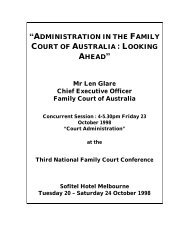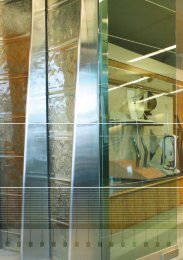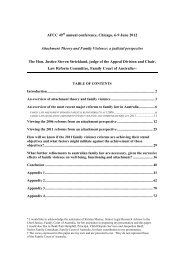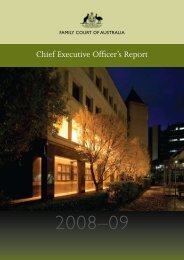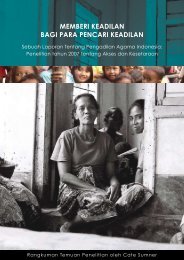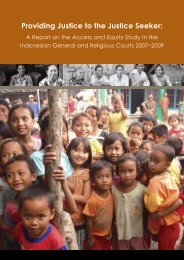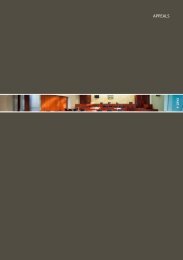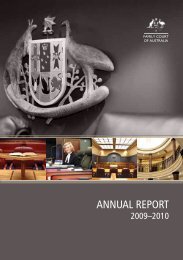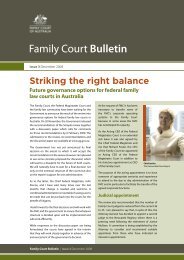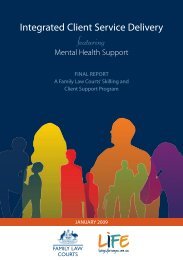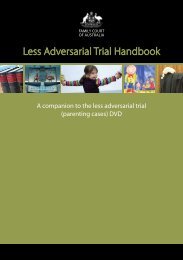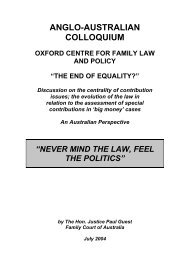Open PDF - Self represented Litigants a challenge - Size 786 KB
Open PDF - Self represented Litigants a challenge - Size 786 KB
Open PDF - Self represented Litigants a challenge - Size 786 KB
You also want an ePaper? Increase the reach of your titles
YUMPU automatically turns print PDFs into web optimized ePapers that Google loves.
<strong>Self</strong>-<strong>represented</strong> <strong>Litigants</strong> ~ A Challenge: PROJECT REPORT<br />
BACKGROUND<br />
The Family Court of Australia, like other Australian courts, operates within an<br />
adversarial system, and is built around an expectation that parties will attend<br />
with legal representation. While the majority of Court clients are <strong>represented</strong>,<br />
the proportion of un<strong>represented</strong> parties is now very significant. Although there is<br />
limited precise information about the profile of self-representation there is a<br />
perception across the literature 1 that the number of self-representing litigants<br />
(SRLs) is increasing in the court system, both within Australia and internationally.<br />
In 1998 the Chief Justice of the Family Court of Australia appointed the Future<br />
Directions Committee within the Court to initiate, support and monitor projects<br />
which focus on the improvement of the efficiency and effectiveness of Court<br />
services. In its final report the Committee stated that "self-representing litigants<br />
are increasingly the new reality and all Court services and procedures must<br />
address them as a permanent, significant and growing user group". 2<br />
SRLs are clients of the Court who, for many and varied reasons, attend Court<br />
without legal representation. The percentage of SRLs who are un<strong>represented</strong><br />
throughout the entire Court process is very low. Current research indicates that<br />
most SRLs have partial representation at different stages throughout their<br />
proceedings. Court services at all levels enable clients to manage Court<br />
processes, but must necessarily avoid stepping into the bounds of legal advice.<br />
The Court commissioned research into self-representation in family law.<br />
Conducted by Professor John Dewar, Barry Smith and Cate Banks in 2000, the<br />
report <strong>Litigants</strong> in Person in the Family Court of Australia was informed by The<br />
Family Court of Australia’s Research Report No. 19 1998 Study of the effects of<br />
legal aid cuts on the Family Court of Australia and its litigants, which found that<br />
35 per cent of Family Court matters involved at least one party who was<br />
un<strong>represented</strong> at some stage.<br />
Key findings from the Dewar Report included:<br />
■<br />
■<br />
the majority of SRLs cannot afford legal representation, although a<br />
significant minority said they did not need or want to be <strong>represented</strong> by a<br />
lawyer<br />
SRLs are disproportionately concentrated in children’s matters as opposed<br />
to property matters<br />
1 See bibliography for relevant literature<br />
2 Family Court of Australia Future Directions Committee Report July 2000<br />
1



